OK, folks, I’ll make a confession. I am partial to food that looks like its origin. That is, carrots that look like carrots, potatoes that look like potatoes.
Now we’ve got the 21st century version of giant ink-jet printers squirting out food stuffs of all kinds.
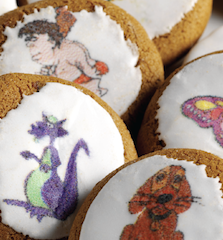
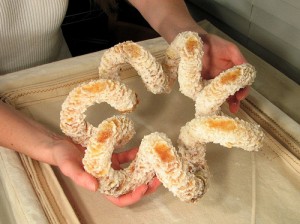 The first step was to use ink-jet technology to print ON food. For example, Dimatix, a Fujifilm company, prints directly on food with edible dyes.
The first step was to use ink-jet technology to print ON food. For example, Dimatix, a Fujifilm company, prints directly on food with edible dyes.
Printed on white frosting, the images can approach photographic quality.
Then as 3D printing technology – stereolithography – improved, the first step was to experiment with sugar to make giant sugar candy sculptures.
By spraying layer upon layer of sugar and heating it to fuse the granules, the whole thing holds together.
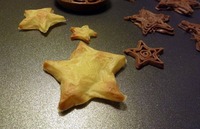 Next we have some folks at the University of the West of England going Pringles one further, by “printing” mashed potatoes. While it is possible to squeeze mashed potatoes out of a 3D printer, it’s a challenge to pick up the carefully extruded pile of potatoes to bake them. So far, the best method is to print on waxed paper and throw the whole thing in the oven to solidify it enough to handle.
Next we have some folks at the University of the West of England going Pringles one further, by “printing” mashed potatoes. While it is possible to squeeze mashed potatoes out of a 3D printer, it’s a challenge to pick up the carefully extruded pile of potatoes to bake them. So far, the best method is to print on waxed paper and throw the whole thing in the oven to solidify it enough to handle.
Students from Cornell University have installed a 3-D printer at the French Culinary Institute in Manhattan where things are getting even more sophisticated. Liquids, pastes, and gels can be squirted from nozzles inside a box-like printer.
The students have already experimented with with cheese, cake batter, chocolate, and pastry dough. Below, a snack of pastry and turkey is “printed” in one process.
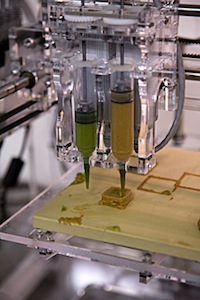
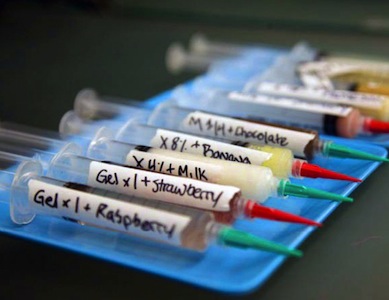
.
Are you ready for a handy-dandy, “food printer” in your kitchen?
Printed food may be the next frontier, but at GoodFood World, we’re sticking to whole and minimally processed good food!
